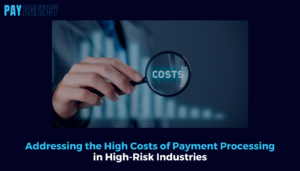Payment fraud is a significant concern in today’s digital world, affecting individuals, businesses, and financial institutions. This article aims to provide an understanding of payment fraud by exploring its causes, effects, and potential solutions. By shedding light on this issue, we can better equip ourselves with the knowledge to prevent and combat online payment fraud effectively.
1. Introduction
Payment fraud refers to any illegal activity aimed at unauthorized access, manipulation, or theft of funds during a transaction process. With the increasing adoption of digital payment methods, fraudsters have become more sophisticated, exploiting vulnerabilities in payment systems and exploiting unsuspecting individuals and organizations.
2. Causes of Online Payment Fraud
Several factors contribute to the occurrence of payment fraud:
a. Weak Security Measures
Insufficient security measures, such as weak passwords, lack of encryption, and inadequate authentication processes, provide opportunities for fraudsters to gain unauthorized access to sensitive information and carry out fraudulent transactions.
b. Phishing and Social Engineering
Phishing attacks involve tricking individuals into revealing their personal or financial information through deceptive emails, messages, or phone calls. Social engineering techniques manipulate victims into disclosing sensitive data or performing actions that facilitate fraudulent transactions.
c. Data Breaches
Data breaches compromise personal and financial information stored by organizations, exposing individuals to the risk of identity theft and fraudulent activities. Stolen data can be exploited by fraudsters to carry out unauthorized transactions.
d. Malware and Hacking
Malicious software, such as keyloggers and remote access tools, can be used by hackers to gain control over individuals’ devices or compromise payment systems. These tools capture sensitive information, enabling fraudsters to carry out fraudulent transactions.
3. Effects of Online Payment Fraud
Payment fraud has wide-ranging effects on individuals, businesses, and financial institutions:
a. Financial Losses
The immediate and most apparent impact of payment fraud is financial loss. Individuals may suffer from unauthorized transactions, while businesses and financial institutions face substantial monetary losses, negatively impacting their operations and profitability.
b. Reputational Damage
Payment fraud incidents can lead to reputational damage for businesses and financial institutions. Customer trust and confidence may be eroded, resulting in decreased customer loyalty and potential loss of business.
c. Legal and Regulatory Consequences
Payment fraud can have legal and regulatory implications. Businesses and financial institutions may face legal actions, fines, and penalties for failing to adequately protect customer data and prevent fraudulent activities.
d. Psychological and Emotional Impact
Individuals who fall victim to payment fraud may experience significant psychological and emotional distress. They may feel violated, anxious, and vulnerable, which can have long-lasting effects on their well-being.
4. Solutions to Online Payment Fraud
Addressing payment fraud requires a multi-faceted approach involving individuals, businesses, and financial institutions:
a. Robust Security Measures
Implementing strong security measures is essential to combat payment fraud. This includes robust password policies, encryption of sensitive data, multi-factor authentication, and regular software updates to protect against known vulnerabilities.
b. Education and Awareness
Raising awareness about payment fraud risks and prevention strategies is crucial. Individuals should be educated about common fraud tactics, phishing awareness, and safe online practices to help them recognize and avoid fraudulent schemes.
c. Enhanced Fraud Detection and Monitoring
Businesses and financial institutions should employ advanced fraud detection and monitoring systems to identify suspicious activities and patterns. Machine learning algorithms and artificial intelligence can help detect anomalies and proactively prevent fraudulent transactions.
d. Strong Customer Verification
Implementing secure customer verification processes, such as biometric authentication or tokenization, can enhance transaction security and prevent unauthorized access to sensitive information.
e. Collaboration and Information Sharing
Collaboration among businesses, financial institutions, and law enforcement agencies is crucial in combating payment fraud. Sharing information about known fraud patterns, emerging threats, and best practices can help create a united front against fraudsters.
f. Regular Monitoring and Reporting
Businesses and financial institutions should conduct regular audits and monitoring of their payment systems to identify vulnerabilities and potential fraudulent activities. Prompt reporting of fraud incidents to the relevant authorities can aid in investigations and improve overall fraud prevention efforts.
g. Continuous Improvement
As fraud tactics evolve, it is important for businesses and financial institutions to continuously assess and improve their fraud prevention strategies. Staying updated with the latest security technologies, industry standards, and best practices can help mitigate emerging risks.
h. Regulatory Compliance
Adhering to relevant regulations and industry standards is essential for preventing payment fraud. Compliance with regulations, such as the Payment Card Industry Data Security Standard (PCI DSS), ensures the implementation of security controls to protect sensitive payment data.
5. Conclusion
Payment fraud poses significant risks to individuals, businesses, and financial institutions. By understanding the causes, effects, and solutions of payment fraud, we can take proactive measures to prevent and mitigate the impact of fraudulent activities. Robust security measures, education and awareness, enhanced fraud detection systems, strong customer verification, collaboration, and continuous improvement are essential components of a comprehensive approach to combat payment fraud. By implementing these measures and staying vigilant, we can safeguard our financial systems and protect ourselves against the ever-evolving threat of payment fraud.




